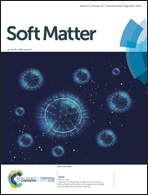The elastic Rayleigh drop
Abstract
Bioprinting technologies rely on the formation of soft gel drops for printing tissue scaffolds and the dynamics of these drops can affect the process. A model is developed to describe the oscillations of a spherical gel drop with finite shear modulus, whose interface is held by surface tension. The governing elastodynamic equations are derived and a solution is constructed using displacement potentials decomposed into a spherical harmonic basis. The resulting nonlinear characteristic equation depends upon two dimensionless numbers, elastocapillary and compressibility, and admits two types of solutions, (i) spheroidal (or shape change) modes and (ii) torsional (rotational) modes. The torsional modes are unaffected by capillarity, whereas the frequency of shape oscillations depend upon both the elastocapillary and compressibility numbers. Two asymptotic dispersion relationships are derived and the limiting cases of the inviscid Rayleigh drop and elastic globe are recovered. For a fixed polar wavenumber, there exists an infinity of radial modes that each transition from an elasticity wave to a capillary wave upon increasing the elastocapillary number. At the transition, there is a qualitative change in the deformation field and a set of recirculation vortices develop at the free surface. Two special modes that concern volume oscillations and translational motion are characterized. A new instability is documented that reflects the balance between surface tension and compressibility effects due to the elasticity of the drop.



 Please wait while we load your content...
Please wait while we load your content...